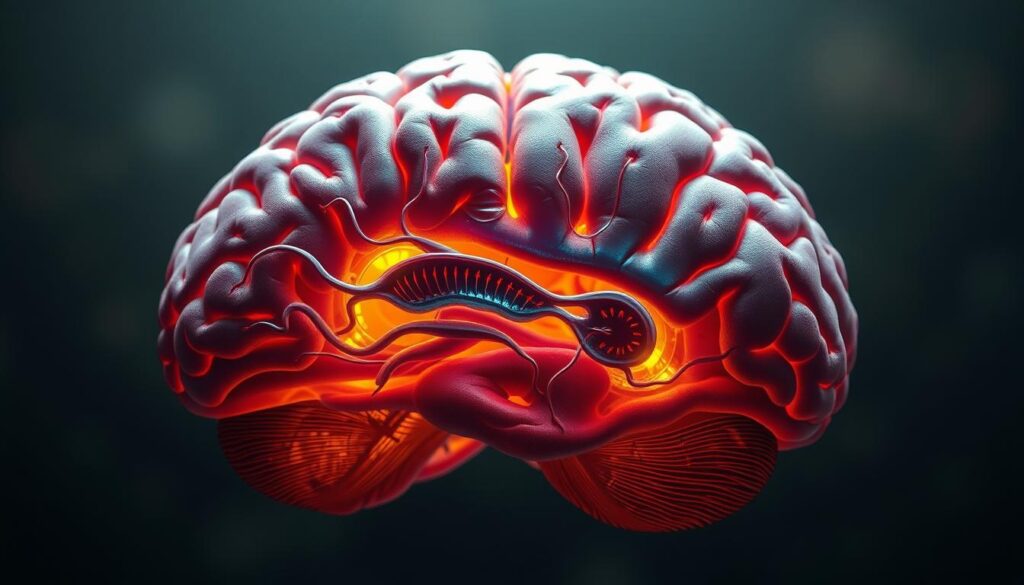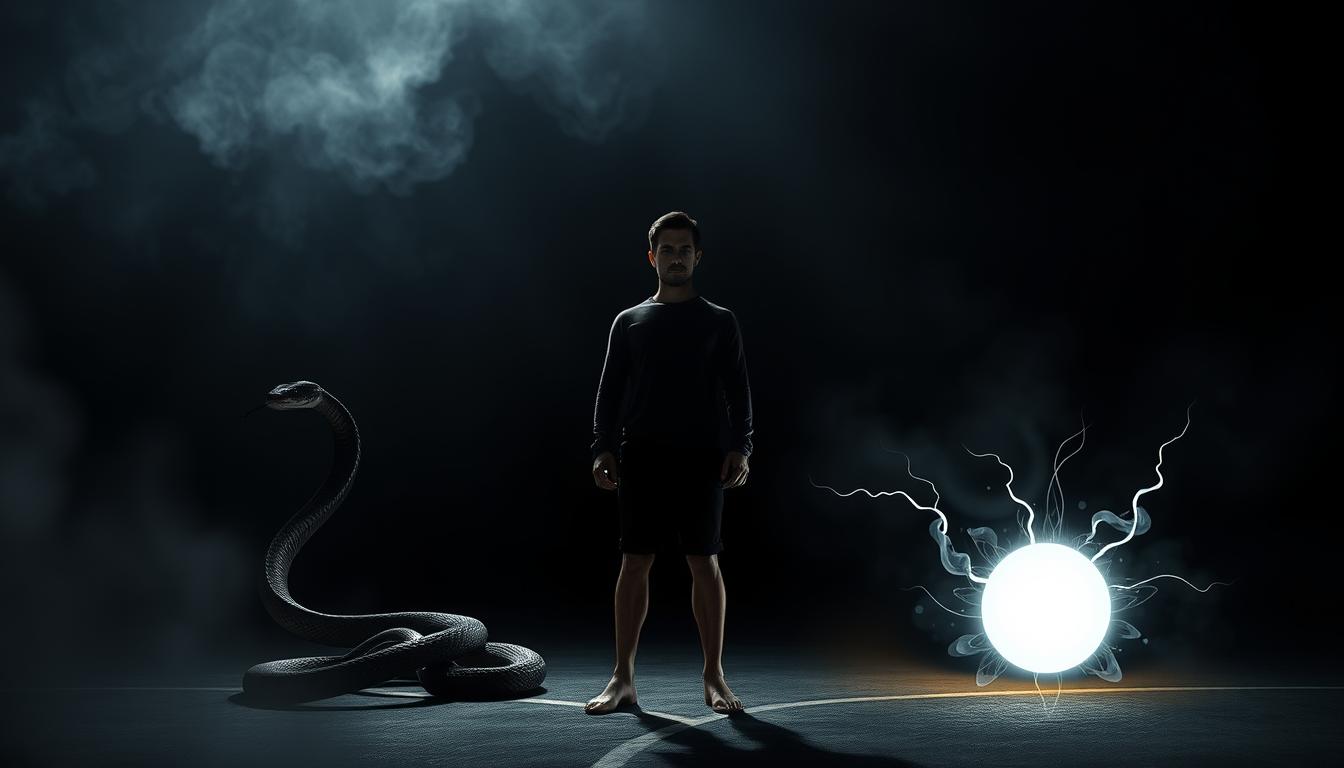In the grand theater of life, two powerful forces shape our choices: instinct and intuition. While they may seem similar, understanding their differences can lead to better decision-making. Instinct is a primal, automatic response hardwired into our DNA for survival. For example, pulling your hand away from a hot stove happens without conscious thought.
On the other hand, intuition is a reflective inner knowing. It emerges from deep subconscious processing and past experiences. A gut feeling about a person or situation often falls into this category. Unlike instinct, intuition can adapt and evolve based on new information.
This article will explore these concepts using insights from evolutionary biology and practical life coaching. Whether it’s reacting quickly to danger or making thoughtful life choices, understanding these forces can empower you to navigate life more effectively.
Key Takeaways
- Instinct is an automatic, survival-based response.
- Intuition is a reflective inner knowing shaped by experience.
- Understanding both can improve decision-making.
- Examples include quick reactions to danger and thoughtful life choices.
- Scientific insights and practical coaching are used to explore these themes.
Understanding the Core Concepts
When it comes to making decisions, two inner forces often guide us in unique ways. One is immediate and automatic, while the other is reflective and thoughtful. Understanding these forces can help us make better choices in life.
Defining Instinct and Intuition
Instinct is a hardwired, automatic response to danger or immediate needs. For example, pulling your hand away from a hot surface happens without thinking. It’s a survival mechanism built into our biology.
On the other hand, intuition is a deeper, reflective process. It’s that gut feeling you get when something feels right or wrong. Unlike instinct, intuition develops over time and is shaped by past experience.

Exploring Their Roles in Decision-Making
Both forces play crucial roles in how we make decisions. Instinct helps us react quickly in emergencies, while intuition guides us in more complex situations. For instance, trusting a new colleague might come from a gut feeling, while avoiding a dangerous situation is an instinctive response.
Understanding the difference between these two can help us leverage them effectively. By recognizing when to trust our instincts and when to rely on intuition, we can navigate life with greater confidence.
Instinct and Its Biological Basis
The roots of our automatic reactions lie deep within our evolutionary history. These responses are hardwired into our DNA, ensuring survival in critical moments. Understanding this biological foundation helps us appreciate why we act the way we do in certain situations.
Evolutionary Origins and Survival Mechanisms
Instincts are deeply tied to our genetic makeup. Over thousands of years, they have evolved to protect us from harm. For example, the fight-or-flight response is a classic survival mechanism. When faced with danger, our bodies react instantly, preparing us to either confront the threat or escape.
Another example is maternal protection. Mothers instinctively shield their young from harm, a behavior observed across species. These automatic responses are a fundamental way our bodies ensure safety in critical situations.

The Role of Automatic Responses
Automatic responses operate without conscious thought, making them essential for survival. For instance, pulling your hand away from a hot surface happens in a split second. This quick reaction prevents injury and demonstrates how our bodies prioritize safety.
These behaviors are not learned but are instead innate. They are shared among all members of a species, ensuring consistent survival strategies. Below is a table summarizing key instinctive behaviors and their purposes:
| Behavior | Purpose |
|---|---|
| Fight-or-flight response | Protection from immediate danger |
| Maternal protection | Safeguarding offspring |
| Withdrawal reflex | Preventing injury from harmful stimuli |
Understanding these automatic responses helps us recognize their importance in our daily lives. They are a testament to the incredible ways our bodies are designed to protect us.
Intuition as Your Inner Guide
Life’s challenges often require more than just quick reactions; they demand thoughtful insight. This is where intuition comes into play. Unlike immediate responses, intuition is a reflective process that taps into a lifetime of experiences and subtle cues. It’s that inner voice that whispers when something feels right or wrong, even when logic seems absent.

Listening to Your Inner Voice
Intuition influences our decision-making by offering reflective insight alongside automatic responses. For example, choosing a career path or trusting a new relationship often involves more than just a quick reaction. It requires listening to that inner voice that considers past experiences and future possibilities.
Research from the University of California, Berkeley, found that 70% of people rely on their intuition for major life decisions. This highlights its importance in navigating complex situations. By integrating both instinct and intuition, we can make more meaningful choices.
- Intuition taps into a lifetime of experiences and subtle cues.
- It offers reflective insight alongside automatic responses.
- Listening to your inner voice can lead to better decision-making.
- Examples include career choices and relationship decisions.
In ambiguous or challenging circumstances, intuition becomes a critical guide. It helps us navigate uncertainty with confidence. As the American Psychological Association notes, 65% of people believe intuition plays a vital role in their personal and professional lives.
Encouraging readers to trust their inner voice can transform the way they approach life’s challenges. By balancing quick reactions with thoughtful insight, we can make decisions that align with our deepest values and goals.
Instinct v Intuition: Recognizing the Difference
Every day, we rely on two inner forces to guide our actions and decisions. One operates automatically, while the other reflects deeper insight. Understanding their differences can help us navigate life more effectively.
Gut Feeling vs. Reflective Insight
A gut feeling is an automatic response that happens without conscious thought. For example, jumping back when you hear a loud noise is a survival mechanism. It’s quick and ensures immediate safety.
On the other hand, reflective insight comes from accumulated knowledge and experience. It’s that moment when you sense something is off about a situation, even if you can’t explain why. This inner knowing often taps into your wisdom and past lessons.

Identifying Subtle Cues
Recognizing the difference between these two forces requires paying attention to subtle cues. Automatic responses are immediate and physical, like a racing heart or a sudden urge to act. Reflective insight, however, feels more like a quiet nudge or a sense of clarity.
For instance, when meeting someone new, a gut feeling might make you cautious, while reflective insight could help you understand their intentions. Both are valuable, but they serve different purposes.
“The key to effective decision-making lies in knowing when to trust your gut and when to listen to your inner wisdom.”
Here’s a table summarizing the key differences:
| Gut Feeling | Reflective Insight |
|---|---|
| Automatic response | Reflective process |
| Ensures immediate survival | Relies on accumulated knowledge |
| Physical cues (e.g., racing heart) | Mental clarity or quiet nudge |
Balancing these two forces can lead to better decisions. By understanding their roles, you can leverage your ability to respond quickly while also tapping into your deeper wisdom.
Integrating Instinct and Intuition for Better Decision-Making
In the fast-paced world of decision-making, blending immediate reactions with thoughtful insight can lead to better outcomes. Both automatic responses and reflective processes play unique roles in how we navigate challenges. By understanding how to balance these forces, we can make more informed and effective choices.

Balancing Automatic and Thoughtful Responses
Automatic responses, like pulling your hand away from a hot surface, are essential for immediate safety. Reflective processes, on the other hand, help us make sense of complex situations. For example, choosing a career path often involves careful reasoning and a deep understanding of your goals.
Here are some strategies to combine these forces effectively:
- Trust your gut in emergencies: Quick reactions can save lives in critical moments.
- Reflect on past experiences: Use accumulated knowledge to guide complex decisions.
- Pay attention to subtle cues: Notice physical sensations and mental clarity to distinguish between the two.
Balancing these approaches helps a person navigate the world with confidence. It ensures that you’re prepared for both immediate dangers and long-term challenges.
Real-Life Scenarios
Consider a business leader facing a high-stakes decision. Trusting their gut might help them act quickly in a crisis, while reflective insight ensures the decision aligns with long-term goals. This balanced approach leads to better outcomes and fosters trust among stakeholders.
Another example is personal relationships. A gut feeling might make you cautious about someone new, but reflective insight helps you understand their intentions. By integrating both, you can build stronger connections.
“The best decisions come from a harmonious blend of quick reactions and thoughtful reasoning.”
By developing a heightened understanding of when to trust your gut and when to reflect more deeply, you can improve your decision-making skills. This balanced approach is essential for sound judgment in both personal and professional life.
For more tips on how to improve decision-making, explore our resources and practical guides.
Enhancing Your Intuitive Abilities
Developing your intuitive ability can transform how you approach life’s challenges. By honing this inner skill, you can make better decisions and navigate uncertainty with confidence. Practices like mindfulness and reflective journaling are key to unlocking this potential.

Mindfulness and Reflective Practices
Mindfulness meditation is a powerful way to boost your awareness and connect with your inner voice. By focusing on the present moment, you create space for intuitive insights to surface. Regular practice helps you tune into subtle cues that guide your judgment.
Reflective journaling is another effective tool. Writing down your thoughts and experiences helps you identify patterns and learn from your past experience. Over time, this practice strengthens your ability to trust your inner knowing.
Practical Steps to Strengthen Inner Knowing
Here are some actionable steps to enhance your intuitive ability:
- Practice daily meditation: This helps calm the mind and sharpen your focus.
- Keep an intuition journal: Track your hunches and their outcomes to validate your inner guidance.
- Spend time in nature: Solitude in natural settings fosters harmony and aligns you with your intuitive senses.
By incorporating these habits into your routine, you can build a deeper connection to your self and improve your decision-making skills.
“The more you trust your inner voice, the more it becomes a reliable guide in your life.”
Learning from your past experience is also crucial. Reflecting on past decisions helps you understand what worked and what didn’t. This process builds awareness and refines your ability to make sound judgment in the future.
Strengthening your intuitive abilities is a journey. With consistent effort, you can unlock this innate gift and use it to navigate life with greater clarity and confidence.
Real-Life Applications and Behavioral Cues
Survival often depends on quick, automatic reactions to immediate dangers. These responses are hardwired into our biology, ensuring we act swiftly when faced with threats. From avoiding a speeding car to pulling your hand away from a hot stove, these automatic actions are essential for safety.

Using Automatic Responses in Survival Situations
In emergencies, our bodies react without conscious thought. For example, the fight-or-flight response prepares us to either confront danger or escape it. This stimulus-driven reaction is a survival mechanism shared across species.
Behavioral cues, like a sudden loud noise or a sharp pain, trigger these automatic responses. Being aware of these cues helps you know when to trust your body’s signals. For instance, if you feel a racing heart or a surge of adrenaline, it’s your body’s way of preparing you for action.
- Quick reactions save lives: In emergencies, automatic responses ensure immediate safety.
- Behavioral cues guide actions: Physical stimuli like pain or noise trigger instinctive reactions.
- Inner knowing enhances awareness: Trusting your body’s signals helps you act promptly.
These automatic responses have a clear purpose: to protect us from harm. By understanding how they work, we can better navigate both emergencies and everyday challenges.
“Trusting your body’s automatic responses can mean the difference between safety and danger.”
In everyday life, these instincts also play a role. For example, a sudden urge to step back when you sense danger on a crowded street is your body’s way of keeping you safe. By paying attention to these cues, you can make better decisions in critical moments.
Interpreting these signals requires a blend of automatic reactions and inner knowing. This combination ensures that you act swiftly while also understanding the purpose behind your actions. Whether it’s avoiding danger or making split-second decisions, these instincts are a vital part of our survival toolkit.
Modern Decision-Making Through Instinct and Intuition
In today’s fast-paced world, making effective decisions requires a blend of innate reactions and thoughtful insight. Modern challenges often demand quick responses, but they also benefit from a deeper understanding of the situation. By combining these forces, we can create a decision-making system that adapts to both opportunities and challenges.

Adaptive Flexibility in a Complex World
Our instinct innate responses are crucial for immediate action, especially in emergencies. However, reflective thinking allows us to navigate complex situations with greater clarity. For example, a business leader might rely on their gut feeling to make a quick decision during a crisis, but they also need to consider long-term impacts through careful analysis.
Here’s how this adaptive approach works:
- Quick reactions: Trusting your innate responses ensures safety in urgent situations.
- Reflective insight: Combining past experiences with current information leads to better outcomes.
- Seizing opportunities: Flexible thinking helps you recognize and act on unexpected chances.
Developing this system of decision-making offers several benefits. It allows you to manage both routine tasks and complex challenges effectively. For instance, a teacher might use their instincts to handle a disruptive student in the moment, but they also need to reflect on strategies for long-term classroom management.
“The best decisions come from balancing quick reactions with thoughtful reasoning.”
By integrating these approaches, you can create a decision-making process that is both adaptable and reliable. This balance ensures that you’re prepared for whatever life throws your way, whether it’s an immediate need or a long-term goal.
Conclusion
Our cognitive brain relies on both automatic signals and reflective insights to navigate life’s challenges. Understanding the balance between these forces can transform how we make decisions in every environment.
Automatic responses ensure quick actions in critical moments, while reflective insights help us process complex situations at a deeper level. Together, they form a powerful decision-making system that adapts to both immediate needs and long-term goals.
Trusting your inner knowing alongside your brain’s automatic signals can lead to more confident and effective choices. Whether in personal relationships or professional settings, integrating these forces enhances your ability to thrive.
Take a moment to reflect on how you can apply these insights in your daily life. By balancing quick reactions with thoughtful reasoning, you’ll navigate challenges with greater clarity and purpose.

